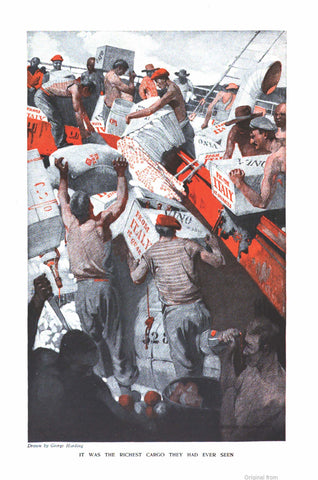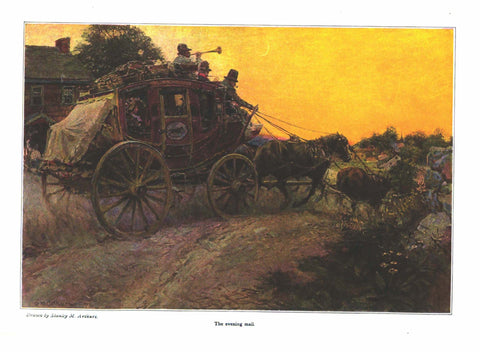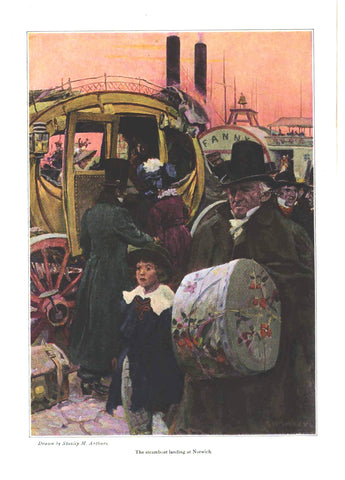Robert Wildhack cover illustration for "Collier's Weekly" (1910): rare, beautifully framed antique
$300.00
Image Name: Country Lanes
Robert Wildhack
May 9, 1910 Issue
Vol. xlv, No. 11
IMAGE INFORMATION
Image Size: H 15.00” x W 11.00”
Matted & Framed: H 22.00” x W 18.00”
Framed Price: $290.00
Packaging and shipping
approximately $25.00
RJW was born in Illinois, but grew up in Indiana. He moved to New York in 1901 where he spent a year studying art with Robert Henri at the Chase School of Art. His classmates there included Glenn O. Coleman, Walter Jack Duncan, Rockwell Kent, Coles Phillips, and Edward Hopper.
He eventually found work at one the city's advertising agencies. While there, his work caught the eye McClure’s editor, who commissioned him to do his first cover illustrations. During his career, he produced cover and story illustrations for most of the popular magazines of the time, including McClure's, Success, The Century, Scribner's, Life, and Collier's.
In about 1910, Wildhack joined the Society of Illustrators. This brought him in contact with Charles Dana Gibson, President of the S-o-I and dean America’s Illustrators. In 1917, Gibson recruited RJW into his legion at the Division of Pictorial Publicity in President Wilson’s newly formed the Committee on Public Information. As a member of the DPP, Wildhack worked with other of the country’s best illustrator/admen designing propaganda art to support “our boys over there” during WWI. Four years before joining the DPP, RJW became a member of the Salmagundi Club, which was the center of art and society for America’s illustrators in the pre-war years.
RJW moved to California in 1920. Terence E. Hanley continues the story: “During the thirties, he hosted his own radio show and reprised his early routines on stage and in the movies. In Life Begins at 8:40, a Broadway hit during 1934-1935, Wildhack gave a comic lecture on ‘Sound Phenomena,’ scientifically classifying snores such as “2d,” The Westinghouse Airbrake, and “2f,” The Troubled Conscious. As Professor Hornblow, he repeated the routine in Broadway Melody of 1936 (1935), starring Jack Benny and Eleanor Powell. In Broadway Melody of 1938 (1937), Wildhack went from snorer to sneezer. He played a somewhat less comic role as Rudolph Herzing in Back Door to Heaven in 1939.” [See: http://indianaillustrators.blogspot.com/2011/01/robert-j-wildhack-1881-1940.html.]
Like other of his contemporaries, RJW was influenced by the changing trends in Fine Arts during the late-19th and early-20th centuries. His use of flat color fields without lines reflects his interest in artistic design, which became increasingly popular in the first decades of the new century. His cover illustration for Collier’s July 9, 1910 issue highlights the carefree atmosphere Americans were enjoying before the Great War. The artist uses a stylish design rather than an illustrated composition to convey his idea to his audience. The image’s flat, untextured color fields suggest that it is a chromolithographs. RJW may have created the original image on a plate, which he inked with olive green, bronze ochre, and black inks. The khaki hue of the fence, the goose, and m’ lady’s hat may be the colored of the un-inked paper.
Since the image appeared on thousands of magazine covers, a photo-mechanical process was surely used to place it there. This probably involved photographing the original piece four times, each with a different color filter. Each of the four shaded negatives produced in the photographic process would have been used to project an image with different colored characteristics onto a printing plate treated with a light-sensitive gel. When light from the uncolored areas of the negative struck the gel it hardened. The gel on the shaded areas of the printing plate remained soluble. When the soluble gel was cleaned away, troughs remained which could be filled with ink.
Each of the four printing plates would then have been inked with its own color. The cover page would have been run across each of these four inked plates, and it the four passes, the artist’s full colored image would have been reproduced. The absence of pixels shows that halftone screens were not used in this reproduction process.








